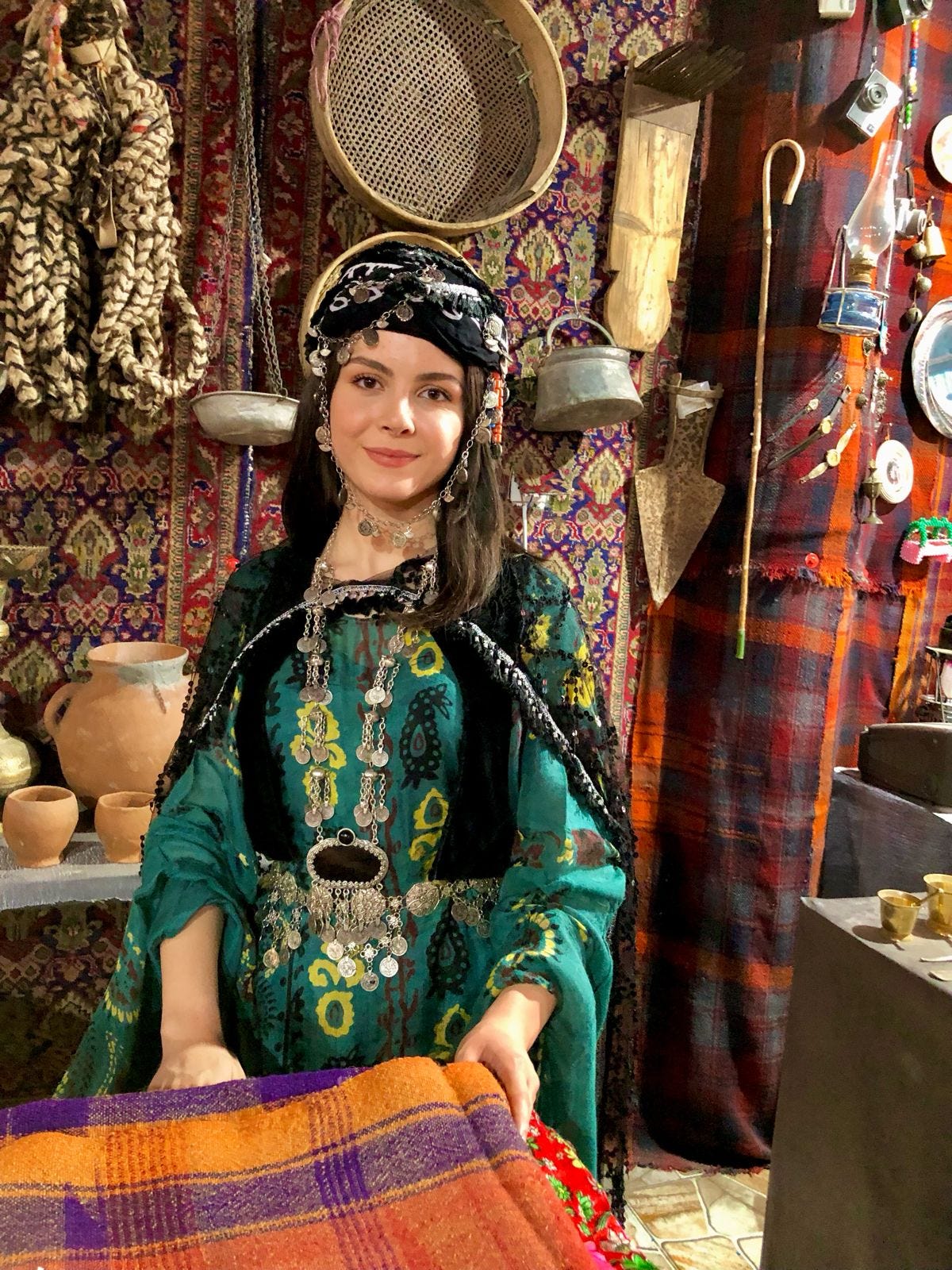Tattooed Narratives
Inspired by the ancient practice of Deq, Liza AlBag is celebrating a Kurdish tradition through her striking carpet designs
At first sight, Liza AlBag’s rugs look strikingly modern, with stylish symbols set against block colors in an elegant, minimalist design. But to those who know their language, these rugs tell secrets and stories, weaving together a narrative that draws on a unique tradition dating back to ancient times.
Once, it was common to see such symbols tattooed on the bodies of Kurdish women, who used their skin like a diary to chronicle major events. Encountering these women was like looking through an album of their lives. “You could tell whether she loved her husband or not, how many children she had, what mattered most in her life,” says AlBag.
These days, it is rare to see Kurdish women with these markings, known as Deq tattoos, and the practice is at risk of dying out. AlBag wants to preserve the tradition by weaving its symbols into her eye-catching carpets, translating a vanishing Kurdish tradition for a new generation inspired by modern designs.
“I love the Deq tattoos, but I don’t want them on my face, so I decided to re-use the tradition in another medium,” says the 24-year-old, who comes from Rania in Sulaymaniyah.
Interpretations of the symbols vary across communities, but common shapes include circles associated with fertility, crosses to protect against evil spirits, and diamonds believed to bring strength. Combs and scissors are often seen on the fingers and toes to bring good luck to the bearer, while tattoos around a woman’s lips are believed by some to be a sign of protest and riot.
In the villages around AlBag’s town, a few older women still have Deq tattoos, but in recent years, younger generations have embraced the practice, with popular motifs including a star on the ring finger to signify loyalty to a lover and the tree of life to represent longevity, marriage, birth, and reproduction. “I’m so happy people are starting to do it again; it’s an important part of our Kurdish culture,” says AlBag.
The decline of Deq tattoos in recent decades means that finding a skilled practitioner is difficult these days. To be done properly and in accordance with Kurdish tradition, a blend of breast milk from a woman who has born a daughter must be mixed with charcoal and other ingredients. “The milk helps heal the scars, and it’s believed that the female influence confers more power,” AlBag explains. A number of people she knows have traveled to Kurdish communities in Turkey, where a handful of women still perform Deq, but AlBag hopes that celebrating the symbols through other forms of art, like her carpet company, will help revive the practice.
“Liza AlBag’s vision is bringing lesser-known Kurdish traditions to life and popularizing them for a new generation. Pieces like hers have a broad appeal that can bring Kurdish creativity and design to the rest of the world,” says Faisal Al Mutar, President of Ideas Beyond Borders.
The idea to combine Deq with contemporary carpet design came to AlBag during a creative course with the Goethe Institute in 2023, where she secured a fund to develop her first carpets. She also won first place that year in an art for social justice competition with her portrait of a woman made using traditional Kurdish fabric. Last year, she set to work on the carpets, printing the familiar Deq symbols onto bright-colored fabrics to create her striking, contemporary designs. “I showed the rugs to friends, and everyone loved them, so I decided to make more,” she says.
Her ambition now is to develop her workshop to create all carpets by hand, using locally sourced materials. “It’s very expensive to do it this way and takes a lot of time, but I hope to employ women from the community to help,” says AlBag. With support from an Innovation Hub grant, she plans to purchase a machine to process the wool and cotton into a suitable form for weaving and invest in marketing her new brand. “I am naming it House of Deq, to honor the tradition,” she says. “I hope one day to be a big brand here and overseas, to showcase the story of our lives and the cultural traditions of Kurdish communities.”
This article was written by Olivia Cuthbert.





